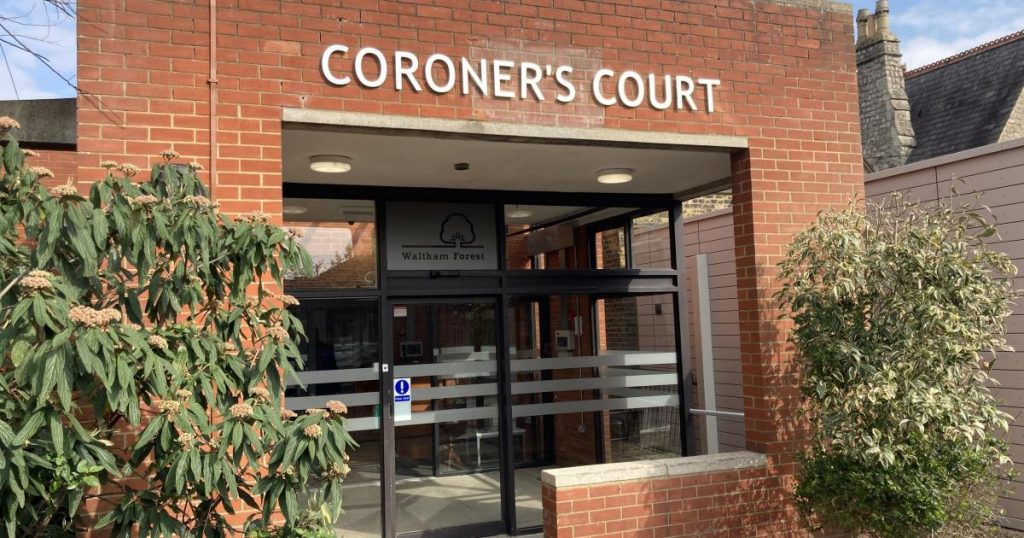Laura Handford, 41, was found laying on the floor of her friend’s spare bedroom in Forest Gate, where she was staying while she looked for a place of her own.
She had struggled with Class A drug addiction for at least 20 years, an inquest heard on Monday (March 31).
Rigor mortis – the stiffening of a body after death – was already affecting her extremities, so paramedics did not even attempt resuscitation.
Tests on her blood found four drugs, including protonitazene.
“The levels of drugs were not particularly high in themselves,” coroner Nadia Persaud told East London Coroner’s Court. “It’s the combination of the number of substances that she had taken.”
A statement by Dwayner Jude, a friend of eight years who Mrs Handford was staying with, was read to the court.
She said she last spoke to Mrs Handford by phone on July 9, 2024.
“Laura sounded well and she said she was coming home,” wrote Ms Jude.
The following day, Ms Jude and her uncle attended a football match in Maryland before returning to her address in Cheshunt Road, Forest Gate, at about 10.45pm.
After knocking on Laura’s bedroom door and getting no answer, she wrote, “I popped my head around the door and could see vomit on the floor.
“Laura was laying on her left-hand side… her back to me. I was concerned due to the vomit I had seen and I went to check on her.
“From what I saw, I thought the worst and became scared, so I called out to my uncle, crying.”
Her uncle dialled 999 while she attempted CPR.
Paramedics arrived in less than five minutes but the evidence suggested Mrs Handford had been dead for some time. She was not breathing and had no pulse.
Her hands, legs and jaw were already stiff, and there was post-mortem staining – known as lividity, when the blood stops pumping and sinks to the lowest part of the body, causing discolouration.
Paramedics reported being told upon arrival that Mrs Handford was a known drug user.
“There was no obvious evidence of drug use, although the friend reported that the patient used both crack and heroin,” their contemporaneous records stated.
But blood from Mrs Handford’s body showed the drugs she used that day were also laced with protonitazene – a novel synthetic around 100 times more powerful than morphine.
The drug is so strong and dangerous that it never passed clinical trials and disappeared for decades, before being revived in recent years to feed demand for increasingly potent opioids amid mass addiction in the USA.
The compound has been linked to a string of deaths which have come before East London Coroner’s Court in Walthamstow.
The Metropolitan Police were called, as is routine for unexpected deaths in the community.
Officers found a syringe in Mrs Handford’s purse and a possible needle mark in her arm, but no other evidence of drugs and nothing to suggest her death was suspicious.
Pathologist Dr Alan Bates found no injuries, but “needle marks consistent with intravenous drug use”.
There was “aspirated food in the airways”, meaning Mrs Handford had inhaled her own vomit – a common occurrence in drug overdose cases.
GP records from the Newham Vicarage Practice in Stratford showed Mrs Handford had been listed as suffering “opioid type drug dependence” in 2003.
In December 2023, Mrs Handford was picked up by police for Class A drugs possession.
She was assessed in custody by mental health practitioners, but they found “no mental health disorder” and advised her to engage with local drug and alcohol dependence service Change Grow Live.
No evidence was presented to the court that she had followed that advice.
Mrs Persaud recorded Mrs Handford’s death as drug-related.
“I would like to pass on the sympathies of the court to Mrs Handford’s family, to her sons in particular, and to her friends,” said Mrs Persaud.




